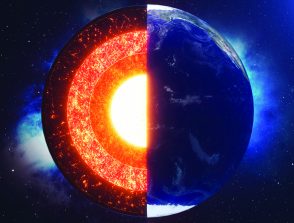Séminaire de Thème – The nature of oceanic lithosphere-asthenosphere boundary and the Gutenberg Discontinuity: The role of water, CO2 and melt
29/02/2024
IPGP - Îlot Cuvier
14:00
Séminaires thème Intérieurs de la Terre et des planètes
Salle 310
Satish Singh
IPGP
Also on Zoom: https://u-paris.zoom.us/j/89845153260?pwd=eUR4NWFseGxYTVVaczBBUmM1UXFGQT09
The plate tectonics theory is based on the concept of a rigid lithospheric plate floating over a weak, deformable and convecting asthenosphere, separated by a boundary termed as the lithosphere-asthenosphere boundary (LAB). Determining the depth and nature of the LAB is fundamental for understanding the formation and evolution of the oceanic lithosphere, and the associated plate tectonic processes. Thermal modelling studies indicate that the LAB should be shallow near the ridge axis and deepen with age as the plate cools and subsides. Surface wave tomography studies have shown the presence of a high shear wave velocity lid associated with the lithosphere, which decreases smoothly to a low velocity in the asthenosphere. These results, indicate that the lithospheric lid thickens with age, consistent with thermal models. On the other hand, seismic anisotropy and some scattering studies have indicated that the LAB lies at a constant depth of 60-80 km and does not vary with age, which has sometimes been interpreted as the Gutenberg (G) discontinuity, but the relationship between the LAB and the G-discontinuity remains a matter of debate. Since the resolution of passive seismic methods is very low, 10-30 km vertically and 100-500 km laterally, it is rather difficult to distinguish between LAB and G-discontinuity, and hence different competing models have been proposed for their origins. Using newly acquired ultra-deep deep seismic reflection data employing the state-of-the-art industry technology, I will show the presence of two distinct continuous reflections covering 2 to 75 Ma oceanic lithosphere in the Atlantic Ocean. We find that the upper reflection deepens with age and follows the ~1250°C isotherm of the plate cooling model whereas the deeper reflection lies at a constant depth of ~75 km. We suggest that the upper reflection represents the thermally controlled LAB, a melt-solid freezing boundary containing a small amount of volatile-rich melt. On the other hand, the lower reflection is the Gutenberg discontinuity, a frozen-in dehydration boundary separating the dry mantle melting region above from the hydrated mantle below formed at the ridge axis. We also find that thermal mantle anomalies rejuvenate the lithosphere, uplift the LAB and destroy the Gutenberg discontinuity. Not all the melt is extracted from melting region but freezes in the lithosphere forming heterogeneity in the lithosphere. We have also discovered lithospheric thinning associated with deep hydration and water-induced melting beneath large transform faults. Our results indicate that the fate of the oceanic LAB and G-discontinuity is defined at the ridge axis, and the plate tectonics is mainly driven by slab-pull and ridge-push.





